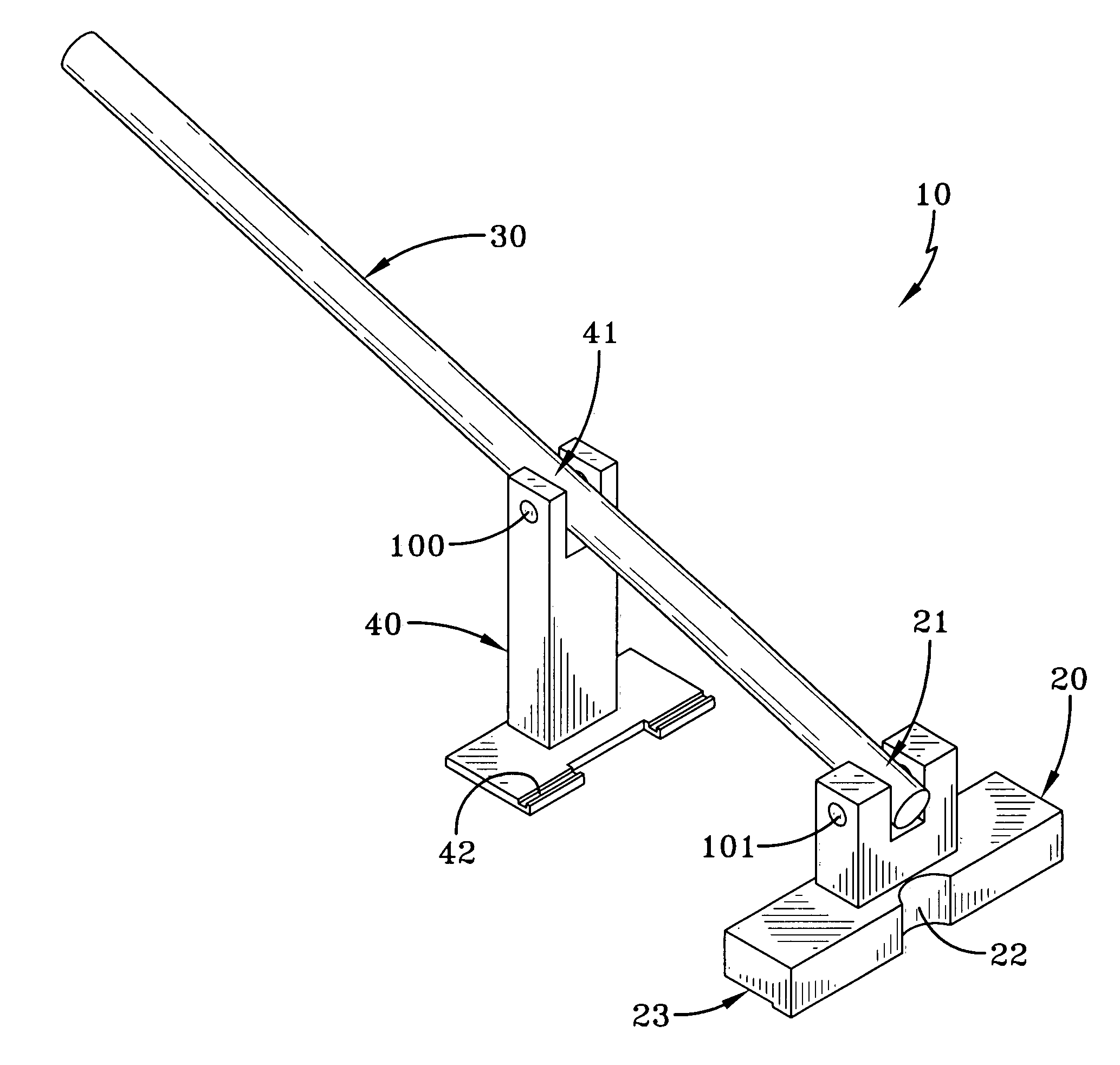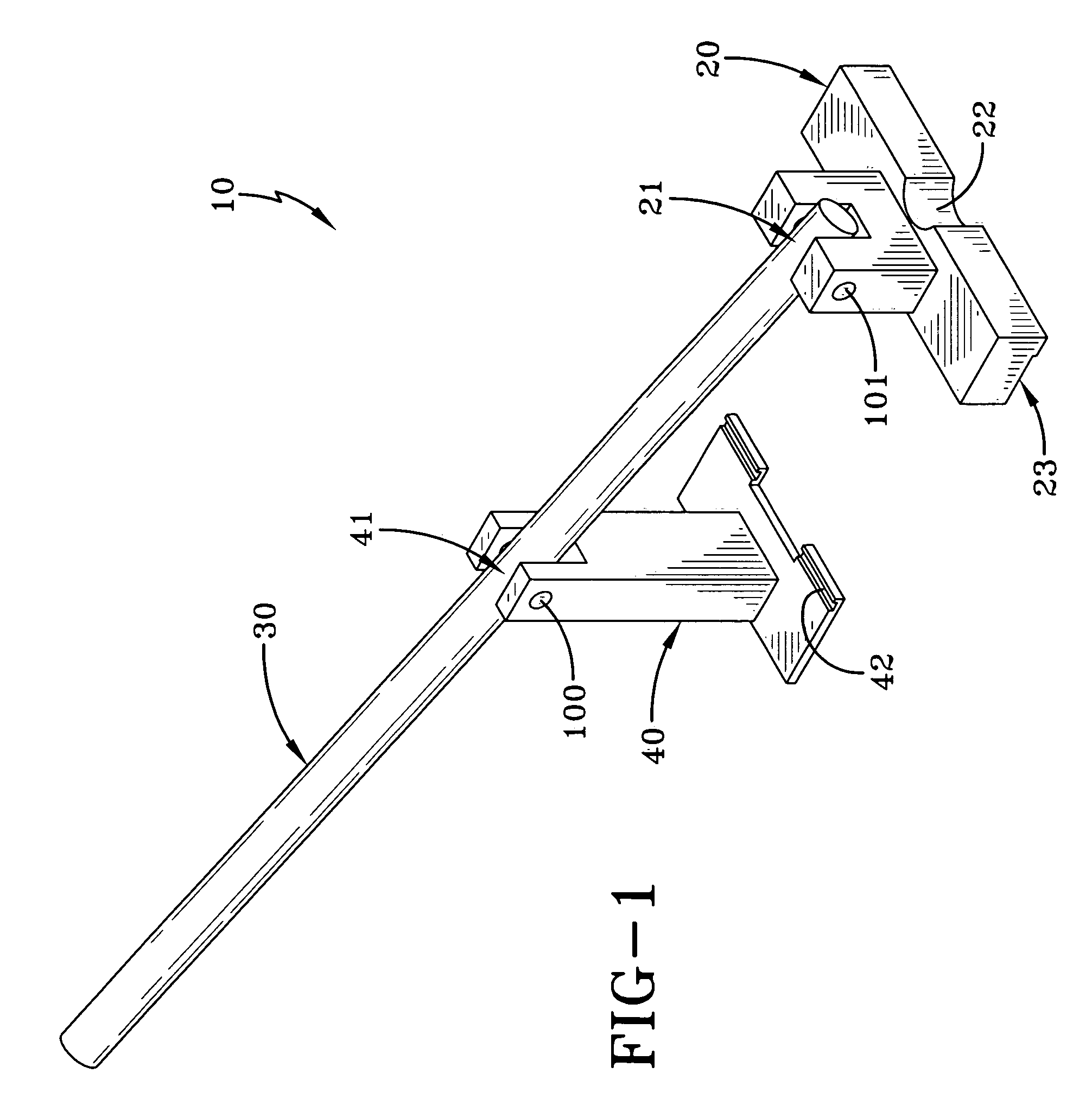Engine cover puller
a technology of engine cover and puller, which is applied in the direction of crowbars, liquid handling, manufacturing tools, etc., can solve the problems of engine cover deformation, engine cover deformation, and engine cover deformation, so as to reduce or eliminate the damage to the sealing surface, facilitate the separation, and reduce or eliminate the deformation of the engine cover
- Summary
- Abstract
- Description
- Claims
- Application Information
AI Technical Summary
Benefits of technology
Problems solved by technology
Method used
Image
Examples
Embodiment Construction
)
[0018]One embodiment of the engine cover puller of the present invention can be seen by reference to FIGS. 1 and 2. As can be observed, the engine cover puller 10 is comprised of a base 20, a lever arm 30, and a puller arm 40. The base 20 and puller arm 40 are shown pivotably connected to the lever arm 30 at 21 and 41, respectively. A pivot pin 100 is shown at the pivotable connection 41 between the puller arm 40 and the lever arm 30. Also shown is a pivot pin 101 at the pivotable connection 21 between the base 20 and the lever arm 30. In this manner, the pivotable connections at 21 and 41 allow for placement of the base 20 and the engagement of the puller arm 40 to achieve and maintain an alignment with a cover to be removed during a substantial portion of movement of the lever arm 30 to effect the separation of an engine cover from a sealing surface with an engine. In other words, the lever arm 30 is pivotably mounted to the base 20 at 21 so that the lever arm 30 may pivot about ...
PUM
| Property | Measurement | Unit |
|---|---|---|
| Force | aaaaa | aaaaa |
| Deformation enthalpy | aaaaa | aaaaa |
Abstract
Description
Claims
Application Information
 Login to View More
Login to View More - R&D
- Intellectual Property
- Life Sciences
- Materials
- Tech Scout
- Unparalleled Data Quality
- Higher Quality Content
- 60% Fewer Hallucinations
Browse by: Latest US Patents, China's latest patents, Technical Efficacy Thesaurus, Application Domain, Technology Topic, Popular Technical Reports.
© 2025 PatSnap. All rights reserved.Legal|Privacy policy|Modern Slavery Act Transparency Statement|Sitemap|About US| Contact US: help@patsnap.com



